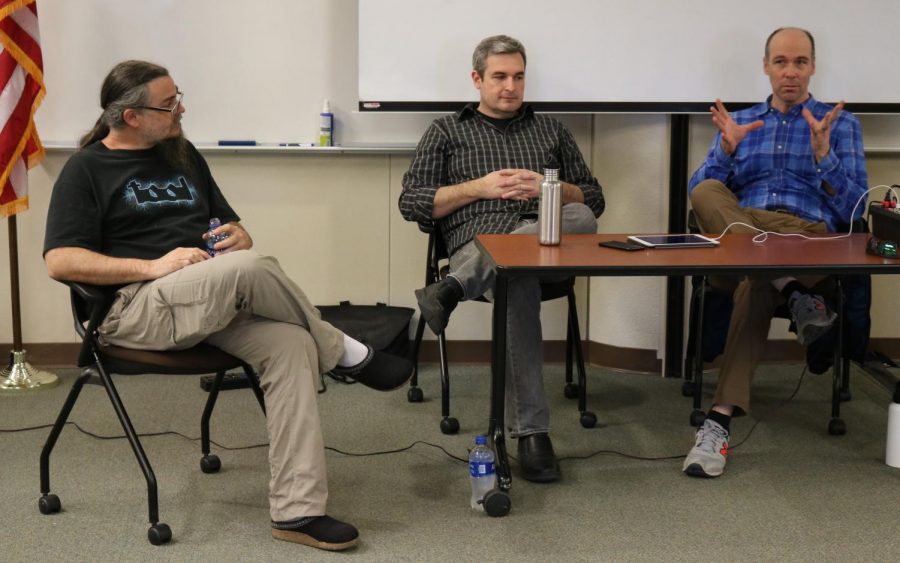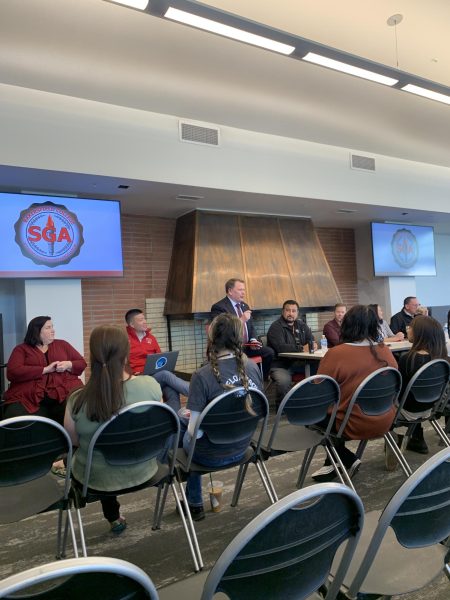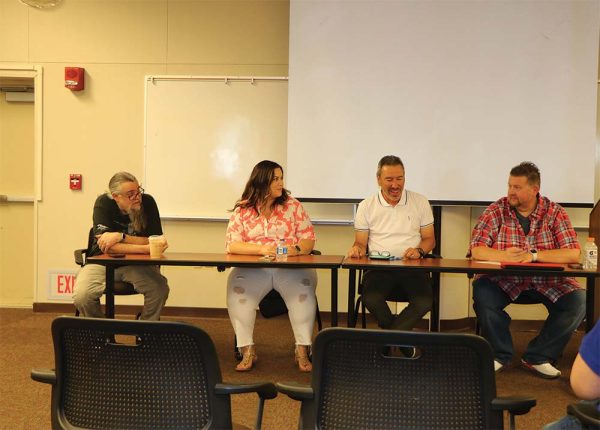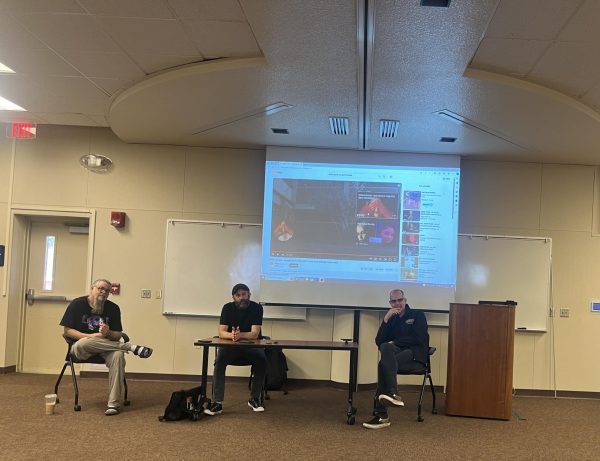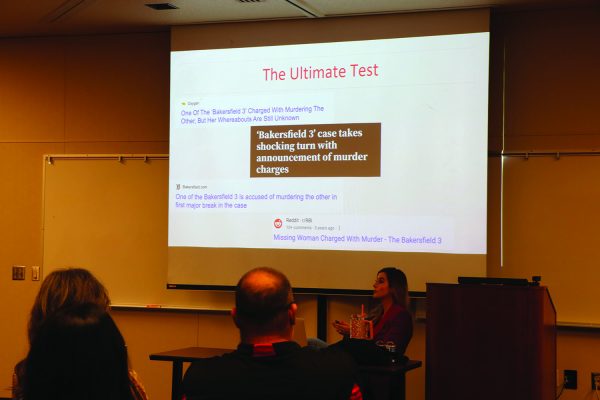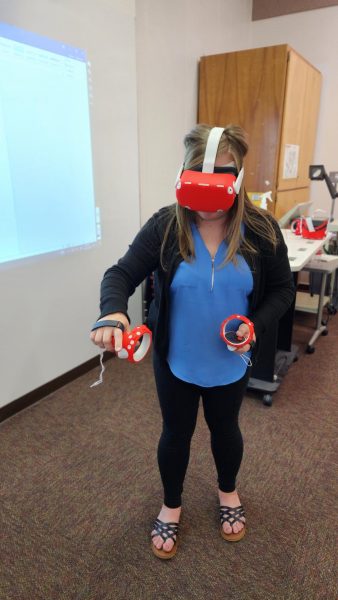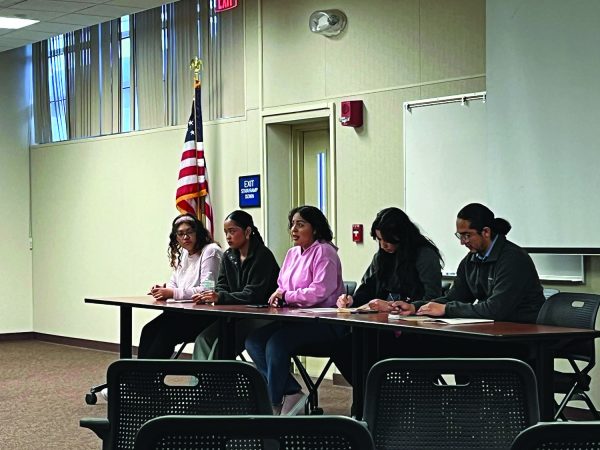What length is the right length?
Professor William, Professor Tiner and Professor Ottom discuss how the size of records effected the length of songs.
March 25, 2019
Deep Cuts and Conversations was held in the Levan Center at Bakersfield College on Mar. 21.
Deep Cuts and Conversation is a discussion where speakers and professors Kris Tiner, Reggie Williams, and Josh Ottum choose a topic of a debate that has to do with music and hold a conversation about the music related topic.
In the past they’ve covered topics such as how music reflects society.
The topic of choice for this semester’s discussion was the length of music and songs.
During the discussion the speakers dissected the topic of song length and why certain songs or albums would last for long durations and why others wouldn’t.
With the topic at hand they talked about how pop songs have always kept to a specific song length from three to four minutes, but also how many other genres of music had easily surpassed those specific durations when it came to music, some being seven minutes to an hour long while some single songs have even lasted for years.
The discussion began with Professor Tiner asking the other speakers what their take was on why a pop song is typically three to four minutes.
“The format guided it initially, you’d have a forty-five record, a single, and the physical limitation of the forty-five or seven-inch record would give you about that time” Ottum said.
They addressed the topic of how technology formed much of the world’s early music due to the limitations of technology of things such as records or in comparison due to the use of advanced technology people are now capable of creating playlists that last for the duration of a month opposed to listening to something that has a time limit.
Ottom spoke upon the idea of technology guiding creativity, arguing that many of the musical artwork that we consume today it modeled in a way so the artist can profit off of the streaming services because of the fact that a vast majority of musical artists get paid based off of how many people listen to them on streaming services such as Apple music, Spotify, and Tidal.
“A brand-new album by Drake would have 18 songs, because artists are being paid by the stream and not by the length of songs” said Ottom.
“Which is why the streaming model is categorically unfair to jazz musicians and classical composers, where an album might only be three or four tracks,” Tiner said
To focus in on their subject, the group focused on songs that represented or sounded like minimal lengthy tracks.
Ottom started by playing a part of a song by a composer thats length was the duration of an hour, while Tiner played some of “Isn’t it a Pity” by Nina Simone that was an 11-minute song and Willims played “Whale and Wasp” by Alice in Chains that was two minutes in its entirety.


